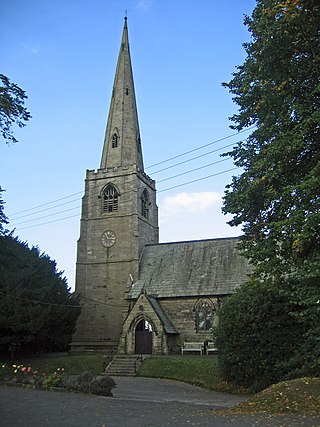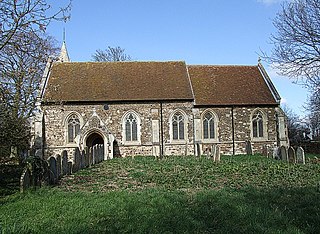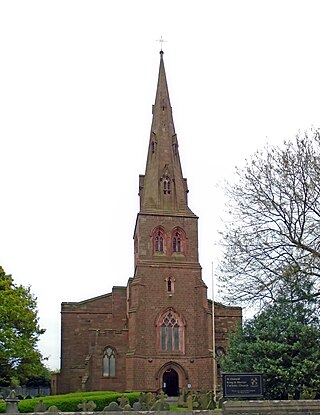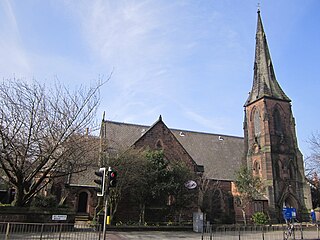
A dormer is a roofed structure, often containing a window, that projects vertically beyond the plane of a pitched roof. A dormer window is a form of roof window.

In general architecture a lucarne is a dormer window. The term is borrowed from French: lucarne, which refers to a dormer window, usually one set into the middle of a roof although it can also apply to a façade lucarne, where the gable of the lucarne is aligned with the face of the wall. This general meaning is also preserved in British use, particularly for small windows into unoccupied attic or spire spaces. Nikolaus Pevsner gaves its meaning as "a small gabled opening in a roof or a spire".

French Renaissance architecture is a style which was prominent between the late 15th and early 17th centuries in the Kingdom of France. It succeeded French Gothic architecture. The style was originally imported from Italy after the Hundred Years' War by the French kings Charles VII, Louis XI, Charles VIII, Louis XII and François I. Several notable royal châteaux in this style were built in the Loire Valley, notably the Château de Montsoreau, the Château de Langeais, the Château d'Amboise, the Château de Blois, the Château de Gaillon and the Château de Chambord, as well as, closer to Paris, the Château de Fontainebleau.

St John the Evangelist's Church is located to the north of the village of Ashton Hayes, Cheshire, England. It is an active Anglican parish church in the diocese of Chester, the archdeaconry of Chester and the deanery of Chester. The church is recorded in the National Heritage List for England as a designated Grade II listed building.

St Nicholas Church is a historic church in Westgate Street in the city of Gloucester, England, under the care of The Churches Conservation Trust. It is recorded in the National Heritage List for England as a designated Grade I listed building. Its truncated spire is a landmark in the city centre.

St Peter's Church is a redundant Anglican church in the village of South Somercotes, Lincolnshire, England. It is recorded in the National Heritage List for England as a designated Grade I listed building, and is under the care of the Churches Conservation Trust. The church is 8 miles (13 km) to the northeast of Louth, and to the west of the A1013 road. With its tall spire rising from a flat landscape, it has been called "The Queen of the Marsh".

St Mary's Church is a redundant Anglican church in the village of Potsgrove, Bedfordshire. England. It is recorded in the National Heritage List for England as a designated Grade II* listed building, and is under the care of the Churches Conservation Trust. The church stands at the end of a country lane, north of the A5 road, some 5 miles (8 km) northeast of Leighton Buzzard.

Preston Minster, formally the Minster Church of St John the Evangelist, is in Church Street, in the centre of Preston, Lancashire, England. From its origin it has been the parish church of Preston. It is an active Anglican church in the deanery of Preston, the archdeaconry of Lancaster and the diocese of Blackburn. Its benefice is united with that of St George, Preston. St John's is recorded in the National Heritage List for England as a designated Grade II* listed building.

St Mary Magdalene's Church is located in Church Street, Clitheroe, Lancashire, England. It is the Anglican parish church of the town, and is in the deanery of Whalley, the archdeaconry of Blackburn, and the diocese of Blackburn. The church, dedicated to Jesus' companion Mary Magdalene, is recorded in the National Heritage List for England as a designated Grade II* listed building.

Christ Church is in Lady Lane, Croft, Cheshire, England. It is an active Anglican parish church in the deanery of Winwick, the archdeaconry of Warrington, and the diocese of Liverpool. Its benefice is united with that of Newchurch. The church is designated by English Heritage as a Grade II listed building. It was a Commissioners' church, having received a grant towards its construction from the Church Building Commission.

St Thomas' Church is in Church Lane in the village of Henbury, Cheshire, England. It is an active Anglican parish church in the deanery of Macclesfield, the archdeaconry of Macclesfield, and the diocese of Chester. The church is recorded in the National Heritage List for England as a designated Grade II listed building.

St Paul's Church is in Brook Street, Macclesfield, Cheshire, England. It is an active Anglican parish church in the deanery of Macclesfield, the archdeaconry of Macclesfield, and the diocese of Chester. The church is recorded in the National Heritage List for England as a designated Grade II listed building. It was a Commissioners' church, having received a grant towards its construction from the Church Building Commission.

Alderley Edge Methodist Church is in Chapel Road, Alderley Edge, Cheshire, England. It is an active Methodist church. The church and its associated hall are recorded in the National Heritage List for England as a designated Grade II listed building.

St Andrew's Church is in Colne Road, Burnley, Lancashire, England. It is an active Anglican parish church in the deanery of Burnley, the archdeaconry of Blackburn, and the diocese of Blackburn. Its benefice is united with those of St Margaret, Burnley, and St James, Burnley. The church is recorded in the National Heritage List for England as a designated Grade II listed building.

St Oswald's Church is a Roman Catholic parish church in St Oswald's Street, Old Swan, Liverpool, Merseyside, England. It is an active parish church in the Archdiocese of Liverpool and in St Joseph's Pastoral Area. The church is recorded in the National Heritage List for England as a designated Grade II listed building.

St Mary's Church is in St. Mary's Road, Grassendale, a district of Liverpool, Merseyside, England. It is an active Anglican parish church in the deanery of Liverpool South Childwall, the archdeaconry of Liverpool, and the diocese of Liverpool. The church is recorded in the National Heritage List for England as a designated Grade II listed building.

Trinity with Palm Grove Church is in Alton Road, Claughton, Birkenhead, Wirral, Merseyside, England. It is a combined United Reformed and Methodist Church. The church is recorded in the National Heritage List for England as a designated Grade II listed building.

St Alban's Church, is in Mill Lane, Liscard, Wallasey, Wirral, Merseyside, England. It is an active Roman Catholic church in the diocese of Shrewsbury. The church is recorded in the National Heritage List for England as a designated Grade II listed building.

St Mary's Church, Presbytery and Convent are in Back Lane, Little Crosby, Sefton, Merseyside, England. The church is an active Roman Catholic parish church in the diocese of Liverpool which was built in 1845–47. The presbytery and convent were both built in the 18th century, and altered in the 19th century. The convent originated as a chapel, and has since been converted into a private dwelling. Both the church and the former convent with its attached presbytery are recorded in the National Heritage List for England as designated Grade II listed buildings.

St Lawrence's Church is in Garstang Road, Barton, Preston, Lancashire, England. It is an active Anglican parish church in the diocese of Blackburn. The church was built in 1895–96, and was designed by R. Knill Freeman. It is constructed in sandstone, and consists of a nave, aisles, a chancel and a southwest steeple. The church holds services on Sundays and Wednesdays. It is recorded in the National Heritage List for England as a designated Grade II listed building.




















